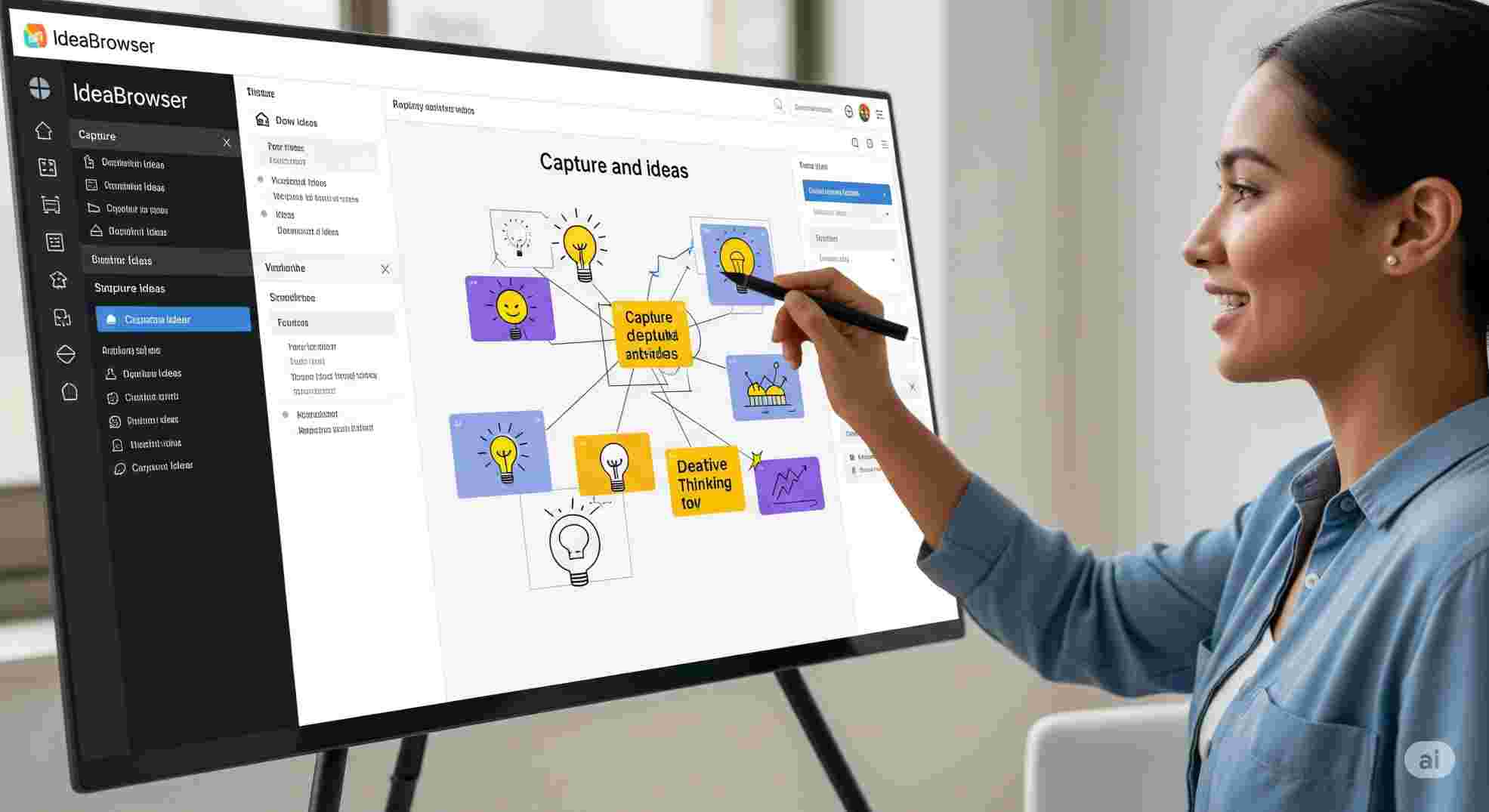As a freelance content creator juggling multiple tasks—from blog ideation to client proposals—I’m always searching for tools that can keep my creative chaos organized. That’s when I discovered IdeaBrowser, an AI-based tool promising to help turn scattered thoughts into structured, actionable ideas.
After spending a month using IdeaBrowser (starting with its free plan), I’ve explored its features, strengths, and shortcomings. Here’s my honest review of whether it fits into a modern creative’s workflow.
What Is IdeaBrowser?
IdeaBrowser is an AI-driven platform built to assist users in capturing, developing, and managing ideas efficiently. Whether you’re an entrepreneur, blogger, or part of a creative team, the tool offers a digital notebook to jot down ideas, tag them, and expand on them with intelligent suggestions.
It integrates with popular platforms like Google Drive and Notion and provides organizational systems like tagging and voice input. I was intrigued by the promise of replacing my scattered sticky notes and multiple apps with one centralized hub.
My Experience with IdeaBrowser
Quick and Simple Onboarding
Getting started was smooth. The platform has a clean, intuitive dashboard that resembles a digital whiteboard. I began with the free plan, which allows up to 50 ideas and basic AI functionality.
The onboarding process was easy to follow. My first test was entering a rough idea for a productivity-themed blog. Immediately, IdeaBrowser suggested related subtopics such as “time-blocking” and “habit loops.” These prompts pushed my brainstorming in useful directions.
Organizing ideas by category and priority made it easier to retrieve them later. I also appreciated the voice note feature, which let me record ideas while commuting. And since IdeaBrowser syncs across devices, I had access to everything whether I was on my laptop or phone.
AI Suggestions: Smart but Not Perfect
The AI suggestion engine was one of the tool’s main highlights. During a social media campaign brainstorm, I entered a generic prompt about “Instagram Reels,” and IdeaBrowser returned content-specific tips like “text overlays” and “reel challenges.” Around 80% of the AI suggestions were helpful and inspired new creative directions.
The tagging system helped organize all thoughts under client-specific labels. When I needed to revisit a pitch for a different campaign, I found older ideas easily using keyword search. The export feature was also handy—sharing content with my team via Google Drive was simple and seamless.
However, the AI struggled with niche topics. For example, when I was working on a piece about sustainable tech, the suggestions felt overly broad, like “green energy” and “eco lifestyle,” rather than offering nuanced angles. This meant I had to step in and fine-tune the output.
Limitations of the Free Plan
While the free plan was great for testing the waters, the 50-idea limit came up faster than expected. I was managing multiple projects that required active brainstorming, so I had to upgrade mid-month just to keep using it. The cap on ideas felt restrictive for heavy users.
I upgraded to the Standard plan at $8/month, which unlocked unlimited ideas and more advanced AI features. For solo creators, this pricing is reasonable, though a one-time purchase option would have been more appealing for occasional users.
Mobile App Experience
The mobile version of IdeaBrowser was decent, especially for recording voice notes. However, editing longer ideas was clunky on smaller screens. The text field felt cramped, making formatting difficult without zooming or external keyboards.
Another downside was limited integration. While Google Drive exports were useful, I missed the ability to export directly to tools like Obsidian or Evernote, which are more central to my daily workflow.
Pricing Plans
- Free Plan: Includes 50 ideas, basic AI features.
- Standard Plan ($8/month): Offers unlimited ideas and improved AI functionality.
- Pro Plan ($20/month): Adds team collaboration and analytics.
While the Standard plan delivered enough value for me as a solo creator, the Pro plan’s analytics felt underwhelming, offering only surface-level metrics like idea count and tagging frequency.
Pros of IdeaBrowser
- AI-Powered Suggestions: Helped generate and refine content ideas efficiently.
- Organized Interface: Tags, categories, and search made retrieving ideas easy.
- Voice Input: A great feature for capturing thoughts while on the move.
- Cross-Device Sync: Accessing ideas from phone and laptop was seamless.
- Affordable Entry Plan: Standard plan strikes a good balance between price and features.
Cons of IdeaBrowser
- AI Depth Lacks for Niche Topics: Generic suggestions for more complex subjects.
- Strict Free Plan Limits: 50-idea cap comes up quickly.
- Mobile UI Needs Improvement: Small-screen editing is not optimal.
- Missing Integrations: Lacks support for platforms like Obsidian and Evernote.
- Analytics Need Work: Insights in the Pro plan felt too basic for the cost.
Final Thoughts
After a month of using IdeaBrowser, I’ve found it to be a helpful companion for managing ideas, especially in the early stages of content creation. Its AI suggestions and tagging system brought some much-needed structure to my creative process.
However, power users may run into limitations with both the AI’s depth and the free plan’s cap. For casual brainstorming, it’s a valuable tool worth trying. If you manage multiple projects and rely heavily on idea capture, the paid plan may be a good investment.
If you’re looking to organize your creative workflow in one space, IdeaBrowser is definitely worth exploring.

